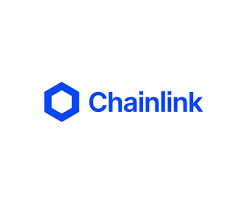
LINK in August 2025
As of mid-August 2025, Chainlink’s native token, LINK, trades around $21.40, fluctuating within a daily range of $20.87 to $22.07. The price reflects a cautious optimism in the market, driven by the expansion of Chainlink’s role as the leading provider of decentralized oracles — the infrastructure that feeds real-world data into blockchain ecosystems.
With the crypto market in a delicate recovery phase after the volatile swings of 2024, Chainlink finds itself at a pivotal juncture. Institutional adoption is growing, staking rewards are reshaping token economics, and the demand for real-time, tamper-proof data in smart contracts has never been higher.
The Backbone of Blockchain: Why Chainlink Matters
Blockchains, by design, are self-contained networks. They can record and verify transactions but cannot independently access information outside their own ledger. This is where oracles come in — systems that bridge blockchains with external data sources such as market prices, weather information, sports scores, or IoT device readings.
Chainlink’s decentralized oracle network (DON) stands as the dominant player in this niche. From powering DeFi protocols like Aave and Synthetix to providing verifiable randomness for NFT projects, Chainlink’s infrastructure has become critical to Web3 operations.
In recent months, its institutional partnerships have expanded, with notable integrations including:
-
SWIFT testing Chainlink’s Cross-Chain Interoperability Protocol (CCIP) for multi-blockchain settlements.
-
Insurance providers leveraging Chainlink’s weather data feeds for parametric payout triggers.
-
Global financial institutions piloting Chainlink for tokenized asset pricing data.
The takeaway? Chainlink isn’t just a crypto project — it’s an essential middleware layer for blockchain’s interaction with the real economy.
The Economic Engine: How LINK Works
LINK is not just a speculative asset — it’s the fuel and collateral of the Chainlink ecosystem.
-
Payment for Oracle Services
Data providers and node operators are paid in LINK for delivering accurate, timely data. -
Staking for Network Security
Node operators must stake LINK as collateral, aligning incentives and penalizing bad behavior. The more staking participation grows, the more LINK is locked away from circulation. -
Chainlink Reserve Program
Announced in late 2024, this program sets aside LINK earned from enterprise contracts into a reserve, further tightening supply.
This three-pronged utility creates natural demand drivers for LINK, especially as adoption rises.
The Staking Revolution
Staking has been the most significant development in LINK’s recent history.
The Staking v0.2 upgrade, rolled out gradually through 2024 and early 2025, has:
-
Increased the maximum staking pool size.
-
Allowed community members to participate alongside professional node operators.
-
Introduced flexible lock-up periods with higher rewards for longer commitments.
By locking tokens for months at a time, staking reduces liquid supply — a classic bullish factor in tokenomics. As of August 2025, industry estimates suggest over 20% of circulating LINK is staked or reserved, up from less than 10% a year ago.
Why this matters:
If demand for Chainlink’s services continues to grow, while available LINK supply tightens due to staking and reserves, the price could face upward pressure purely from supply-demand imbalance.
Real-World Data Demand: The 2025 Catalyst
Smart contracts are evolving from simple token swaps to multi-billion-dollar financial agreements. Real-world data is no longer optional — it’s mandatory.
Sectors driving oracle demand:
-
Decentralized Finance (DeFi) — Accurate asset pricing is the lifeblood of lending protocols, derivatives platforms, and decentralized exchanges.
-
Tokenized Real-World Assets (RWAs) — From real estate to commodities, Chainlink is becoming the standard for valuation and settlement feeds.
-
Gaming & NFTs — Random number generation and live sports integration.
-
Supply Chain — IoT data verification, particularly in industries like agriculture and pharmaceuticals.
-
Insurance — Automated claims triggered by on-chain weather, flight, or event data.
Institutional adoption is especially notable. For example, a recent partnership with a major commodities trading firm allows for near-instant settlement of tokenized oil contracts, verified by Chainlink’s price oracles.
The more blockchain use cases demand off-chain data, the greater the economic throughput for LINK.
Macro Factors Affecting LINK in 2025
While Chainlink’s fundamentals are strong, the crypto market is not immune to macroeconomic influences:
-
Interest Rates & Risk Appetite — A dovish shift by central banks could increase capital flow into risk assets, benefiting crypto.
-
Regulatory Clarity — The U.S. and EU are finalizing digital asset frameworks that may boost institutional comfort.
-
Competition — Although Chainlink leads the oracle market, competitors like Pyth and API3 are attempting to capture share.
However, Chainlink’s first-mover advantage, robust network effects, and broad ecosystem integrations remain significant barriers for rivals.
Price Scenarios for Late 2025
Forecasting crypto prices is notoriously difficult — especially in volatile environments — but well-reasoned scenarios can help frame expectations.
| Scenario | Key Assumptions | Estimated Price Range |
|---|---|---|
| Bullish Case | Staking participation exceeds 30% of circulating supply; strong institutional deals; market-wide rally | $30 – $40 |
| Base Case | Gradual adoption growth; steady staking; moderate market sentiment | $22 – $28 |
| Bearish Case | Delays in staking upgrades; oracle competition rises; broader market slump | $15 – $20 |
Supporting Indicators for the Bullish Case
-
Exchange Outflows — Declining LINK balances on centralized exchanges suggest accumulation.
-
Developer Activity — Chainlink maintains one of the highest GitHub activity rates in the crypto sector.
-
Partnership Pipeline — Continued onboarding of high-value enterprise clients.
Risks and Challenges
Even with a compelling outlook, LINK faces potential pitfalls:
-
Technical Risks — Vulnerabilities in oracle aggregation or smart contracts could damage trust.
-
Adoption Delays — If enterprise pilots stall or fail to scale, demand projections may be overstated.
-
Token Concentration — Large holders (“whales”) could trigger sell-offs during price rallies.
-
Macro Shocks — Geopolitical instability or financial crises could reduce liquidity in speculative markets.
Expert Opinions
While crypto price predictions should be approached cautiously, several market analysts have weighed in:
-
Arcane Research projects a mid-range target of $27 by December 2025, citing increased staking.
-
Messari highlights Chainlink’s “indispensable” role in RWAs, suggesting “significant upside potential” if adoption continues.
-
Independent traders on platforms like TradingView remain split, with bullish sentiment outweighing bearish by roughly 60/40.
The Verdict
As of August 2025, Chainlink is in a strong strategic position. The combination of:
-
Rising real-world data demand
-
Token scarcity from staking and reserves
-
Expanding enterprise adoption
…creates a solid foundation for long-term growth. The key variable for LINK’s 2025 trajectory will be whether network usage growth outpaces market-wide volatility.
If current adoption trends hold and staking participation grows, a base-case end-of-year price of $22–$28 seems reasonable, with $30–$40 achievable under ideal conditions.
Investor Takeaway
For investors, the story of Chainlink in 2025 is about function over hype. This is not a meme coin — it’s an infrastructure layer becoming deeply embedded in the financial and technological fabric of Web3.
The market may not always price LINK efficiently in the short term, but if real-world data demand and staking dynamics stay on track, the long-term fundamentals remain intact.


